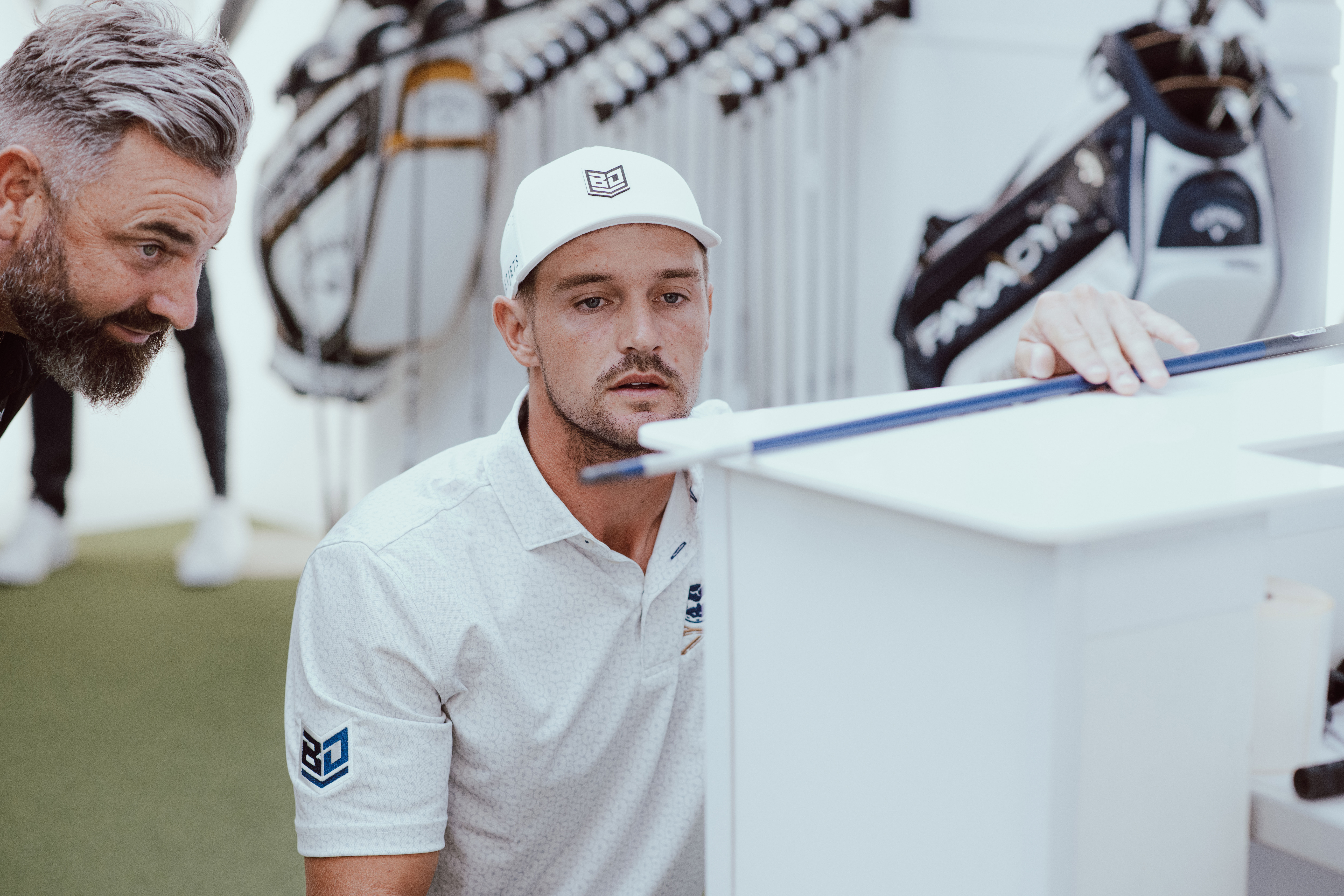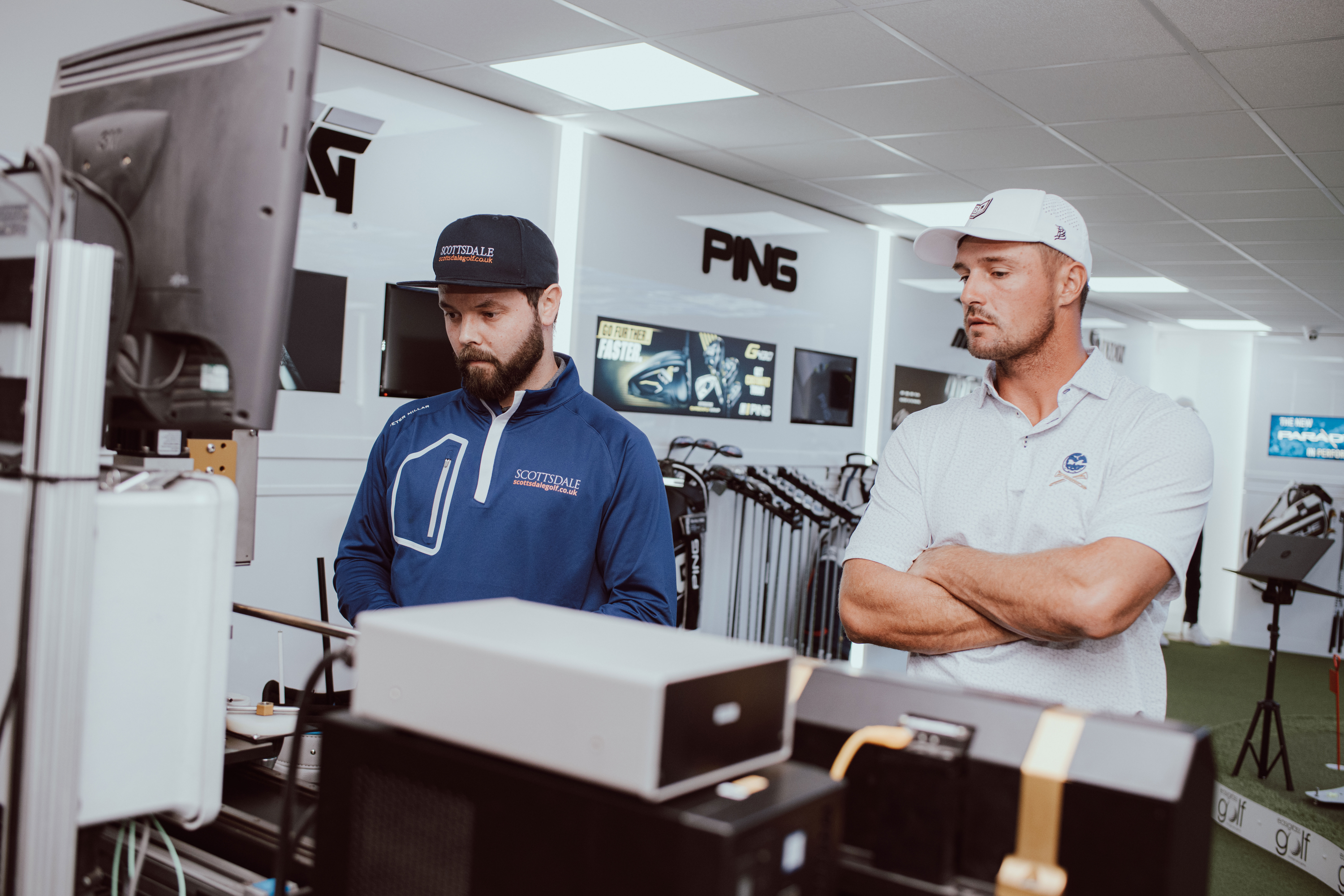What Is Shaft Puring In Golf?
Shaft puring is advanced procedure to improve the performance of your golf clubs, but what is it and what are the benefits?

Joe Ferguson

Golf is a sport of very fine margins with the best players in the world leaving no stone unturned in trying to improve performance. Much of this comes down to technique but a golfer's equipment is another area where marginal gains can be had. Given the quality of golf equipment on the market today, it may come as a surprise that not every piece of golf kit is made absolutely perfectly. Whether you're a beginner, intermediate player, or a low handicapper, chances are that the shafts on your clubs won't be as round or symmetrical as you may hope or think.
One person who was surprised by this was Golf Monthly’s Dan Parker on the latest episode of the Kick Point Golf Gear Show podcast, after resident gear expert Joe Ferguson explained some common minor faults found in shafts.
Even the most advanced shaft manufacturers on the market can’t make a perfectly symmetrical shaft every time, meaning players may be missing out on performance as a result. That’s where the process of ‘puring a shaft’ or ‘shaft puring’ comes in, but what is it and what are the pros and cons of getting it done?
WHAT IS SHAFT PURING?
Shaft puring is the procedure of finding the optimal axis for the shaft of a club to sit on and be fitted on. The goal of shaft puring is to find the stiffest part of shaft which should then be pointing forward for optimal performance. A more stable shaft leads to improved distance with a tighter dispersion.
WHY DO WE NEED SHAFT PURING?
Surprisingly, even the best golf shafts aren't guaranteed to be perfectly round and symmetrical. This may annoy golfers who splash out hundreds of their own money for a specific shaft or even an aftermarket shaft, but the industry has manufacturing tolerances during the production stage. The shaft puring process was developed to counteract any defects caused by such tolerances.
Studies have shown that irregularities in a shaft's structure can cause off-line bending and twisting during the golf swing, leading to inconsistent performance from club to club and higher dispersion rates.

HOW DO I GET MY GOLF CLUB SHAFTS PURED?
Shaft puring is a unique procedure, so finding somewhere to get it done can be a challenge. Although places to get your shafts 'pured' are few and far between, the best place to go is the SST PURE website – a company specializing in the process. The SST Shaft Puring system analyses the structure of the golf shaft, identifies its most stable bending plane and, when assembled in the clubhead, results in tighter dispersion and higher consistency. You can find one at Scottsdale Golf's Fit.Build.Play performance centre in Warrington, just outside of Manchester in the UK - it's the venue that Bryson Dechambeau visited just prior to shooting 58 at the LIV Golf Greenbrier event.
Subscribe to the Golf Monthly newsletter to stay up to date with all the latest tour news, equipment news, reviews, head-to-heads and buyer’s guides from our team of experienced experts.
If you do find somewhere to take your clubs, they will insert your shafts into a machine specifically designed to find its most consistent orientation – constant rotation and pressure will identify the optimal alignment and the shaft will be installed accordingly.
WHAT ARE THE BENEFITS OF GETTING MY GOLF CLUB SHAFTS PURED?
People have differing opinions on the actual benefits of shaft puring, with many believing that the practical gains are so minimal that it is not a necessary procedure. However, there are just as many people in the industry that believe in the concept of cumulative gains and that if puring can improve performance by 1%, then why wouldn't you do it?
In practical terms, the benefits of the procedure should be that the consistency of a player's delivery should improve somewhat resulting in better and more predictable strike locations. The actual benefits will of course depend on how a shaft was positioned initially. Sometimes when puring, you will find that a shaft was actually already sitting on its optimal axis, in which case you will see no improvement in performance at all. However, if a shaft was sitting on an inconsistent axis to start with, the gains are likely to be more noticeable.

Conor joined Golf Monthly in late 2024 after graduating with a Masters degree in Sports Journalism from St Marys University and heads up reviews for rangefinders and golf watches. Conor is lucky to have Royal County Down as his home golf course, beginning to play the game at the age of four and later becoming a caddy at RCD at just eleven years old and doing so for over 12 ears. Playing to a 5 handicap, you’ll likely find him on the range trying (and failing) to hit a Shane Lowry-esque stinger that helped him win The Open Championship at Royal Portrush.
In the bag:
Driver: Ping G40 Max 10K
3 wood: Callaway Epic
Hybrid: Ping G425
Irons: Mizuno JPX 900 Tour
Wedges: Taylormade Milled Grind 52,56,60
Putter: Scotty Cameron Phantom x9.5
- Joe FergusonStaff Writer